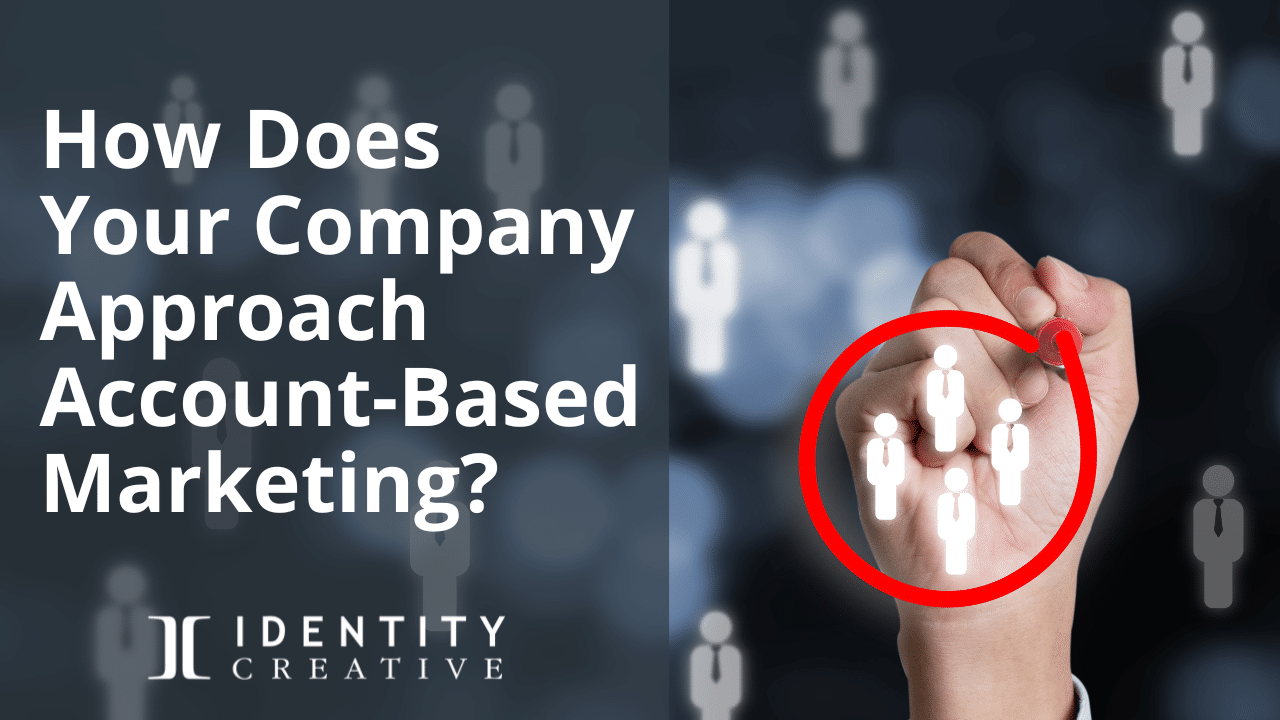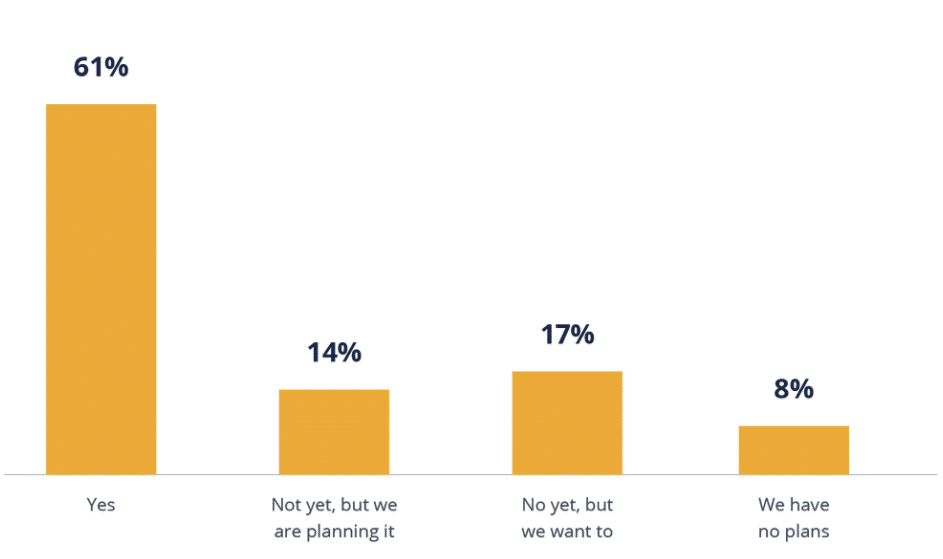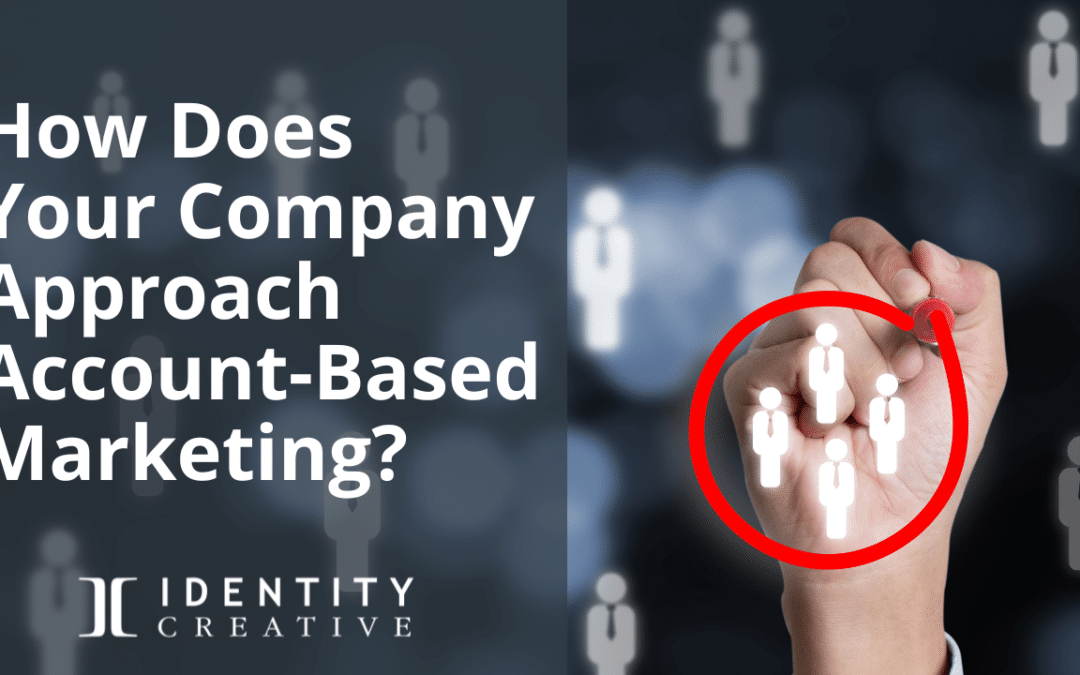How Does Your Industrial or B2B Company Approach Account-Based Marketing?
When your company’s products or services solve problems for a business or an organization rather than individual consumers, you need to engage in account-based marketing. The approach to marketing and sales is different from companies that sell directly to consumers. Instead of targeting a profile consumer, your marketing strategy builds on the profile of your ideal account.
What is Account-Based Marketing (ABM)?
Good ABM brings the sales and marketing teams together to focus on specific accounts. This focus creates marketing initiatives that fit the ideal niche your company serves. If you’re unclear on your company’s focused niche, your marketing is too broad and will not attract your ideal customers.

Who should implement an Account-Based Marketing plan?
The number of industrial and B2B companies implementing ABM is growing
Multiple reports demonstrate that B2B companies which invest in the strategy and implementation of ABM have a higher success rate of closing sales. Leads brought in by marketing are fewer, but they are better qualified. It’s not about the quantity of leads but the quality.
“The global ABM market is expected to be worth $1.6 billion by 2027. Companies that use ABM are nearly 70% better at closing deals, and 58% of B2B marketers experience larger deal sizes with ABM.” Navigating the ABM Hype 2-27-24 Forbes

Some good examples of how companies are using ABM
What is the best way to approach starting an account-based marketing program?
If your industrial company still uses old-school marketing and sales tactics, you’ll need to start with a fresh mindset.
A Michigan-based CEO of a Tier 1 supplier requires his salespeople to rely solely on cold calls and in-person networking. He’s not convinced that he needs to invest in new tech and bring in a creative online marketing team to help build a strategy. While he pours money into a Salesforce account, it’s being used as a simple contact database. He is missing the opportunity to leverage ABM to bring in qualified leads, and the sales team wastes valuable time trying to build brand awareness and get in front of decision-makers while competitors are coming right into their newsfeeds.
Be prepared to invest in an ABM strategy.
Like any marketing initiative, the cost will depend on the company’s objectives and budget. Content creators, strategy consultants, tech tools, and ad buys will impact the investment.
Forrester cites a 2019 study by SiriusDecision that small business pilot programs start around $200K while more complex, targeted ABM programs come in around $600K. The study also found that 70% of those surveyed anticipate that costs will continue to increase. Enterprise organizations will have budgets in the millions.
Is establishing an ABM strategy for your industrial company worth the effort?
How do we go from zero to 100 in ABM?
It’s still true that many manufacturing and industrial small businesses continue to rely on traditional sales efforts and have a very minimal strategy in place. For companies in that spot, what are the steps to start building an ABM program?
You can look at ABM in three levels:
- Highly focused on specific accounts
- Efforts directed to a small sector of accounts
- Targeting accounts in an industry
There are some who would argue that effective ABM focuses on small number of key accounts. With most of our clients, we approach ABM with a broader view of ABM, targeting a profile of an ideal account (industry specific, size, growth potential, location, etc)
If implementing an ABM strategy from scratch, B2B companies can start building a sound foundation with targeted inbound B2B marketing.
Here’s a simple 5-step process to set up an initial ABM program.
1. Align the Sales, Marketing, Product Development, and Customer Service Teams
Build an ABM team that will set the target, objectives, and what is to be measured.
In the article, 7 Strategies for Online ABM Lead Generation and Marketing, we provide and example of how the marketing, sales, and service teams came together to create an online lead funnel that has been working for years and continues to attract qualified leads from around the world.
2. Define Clear Target Accounts or Industries
The ABM Team will evaluate existing accounts and create a profile of the ideal account. The ideal account has the capacity to buy, is healthy and positioned for growth, values the brand and will most likely stay engaged as a loyal customer.
3. Have Consistent Creative, Original Content that is Relevant to Target Accounts
Content that attracts the ideal account must address their specific pain points and speak their language. The recent explosion of generative AI has produced a glut of generic content online. Onboard a creative team that will create a messaging strategy with tailored content and distribute it in emails, social media, paid ads, direct mail, and sales collateral that equips the sales team with tools that close the sale.
4. Organize the CRM (Contact Relationship Management) and Automated Marketing Platform
Buying an expensive CRM subscription like Salesforce does not guarantee success. In fact, we’ve found the opposite to be true. Every client that we’ve onboarded to an ABM program requires a massive CRM overhaul to clean up old contacts, missing information, and inaccurate sales data.
When the CRM and marketing platform are running efficiently, it becomes a robust tool for marketing to bring in and nurture qualified leads, salespeople to follow up and track the sales, and the executive team to see real data to continuously improve the ABM program.
5. Outstanding Customer Service Because Retention Beats Acquisition
A solid ABM program will include keeping in touch with current customers. Maintaining communication creates opportunities to cross-sell, upsell, and improve customer service.
It’s a given that selling to an existing customer is less costly and much easier than acquiring new customers.
How does ABM impact the way we organize our CRM?
We’ve worked with enough clients to know that many salespeople are using their CRM (Contact Relationship Management) ineffectively if they’re using it at all!
CRM software companies can create the illusion that their software will work like magic to increase sales, but they require a plan and training to implement best practices. Setting up and using these tools makes sense when you have a sound ABM strategy and sales team training to build good practices.
A CRM and Automated Marketing Platform work together to bring in qualified leads and carry them through the sales process to close and continued customer loyalty. Sales people who’ve been using another system will need training. We’ve found that providing the reasons why and showing the benefits of the system helps increase their engagement.
It’s understandable. Most salespeople don’t like the tedious side of entering contacts, recording pipeline stages, and entering notes from an automated follow-up task. We’ve found that they use their CRM as a contact list and their not even associated with an account.
Here’s an example of how we’ve demonstrated the benefits of properly adding contacts to a CRM.
Why does every contact need to be associated with an account in our CRM?
When you’re targeting a new account, you’ll likely need to work your way up the decision-making chain, and you’ll gather contact information on the way up.
When you understand the different problems that each person is dealing with in their role, you can “market” to them with messages that resonate and address their issues.
For example:
- Suppose you want to sell your engineering software to a company that designs and manufactures packaging. In that case, you may be talking to several people in that organization before you get to a decision-maker.
First, you meet an engineer at an event who expresses frustration with something your software solves and gives you the department manager’s name.
ENTER INTO CRM:
ACCOUNT: Packing CompanyXY and details
– CONTACT: Engineer (Notes: where you met, their frustration, etc.)
– CONTACT: Department Manager
Second, you contact the department manager, speak to the receptionist, and build some rapport before being transferred to the department manager.Your conversation with the department manager went well, and she invited you to set up a meeting with her and the CFO.
ADD TO ACCOUNT:
– CONTACT: Receptionist
– CONTACT: CFOThe meeting went well, and you’re invited to present your solution to senior management.
ADD TO ACCOUNT:
– CONTACT: CEO
– CONTACT: VP
Keeping your CRM updated with every contact in an account gives you numerous advantages.
Marketing Advantage: The ABM team can craft content (emails, ads, webinars, etc.) that will attract the attention of each person’s role and address their issues where they are in the customer journey.
Sales Advantage: When a contact leaves the company, there are existing relationships within that organization that can provide an introduction to the next person in that role. Each salesperson will benefit from automation that streamlines follow-up, personal service, and motivation with sales goals.
Executive Team Advantage: Leaders can make a host of sound decisions based on accurate data: from the cost of customer acquisition to the lifetime value of a customer.
How to choose ABM-specific software platforms?
Before diving in and committing to a software platform, research and interview colleagues and agenciens on the pros and cons in relation to the unique needs of the company.
Carefully weigh the pros & cons of onboarding with big names like SalesForce/Pardot or Hubspot. They can be more expensive and have more features than most small businesses need.
What’s Ahead for Account-Based Marketing Tools and Practice?
The Terminus State of Modern Marketing Report is a good resource for B2B marketers. The landscape is constantly changing with new marketing technologies, rapid economic shifts, and market disruptions.
Forever gone are the days of constant marketing channels like television, newspapers, and the Yellow Pages. The information landscape is massive and in flux. Most recently, digital marketers will have to maneuver through changes like cookie-free personalization and ever-increasing email inbox filters.
All marketers in every sphere must stay alert to the changes ahead. This is not the time to hang back or recklessly try a few things and see what sticks.
Begin today to pull together an ABM team and research ways your company can map out the unique approach to ABM that makes sense for your budget and sales process.




